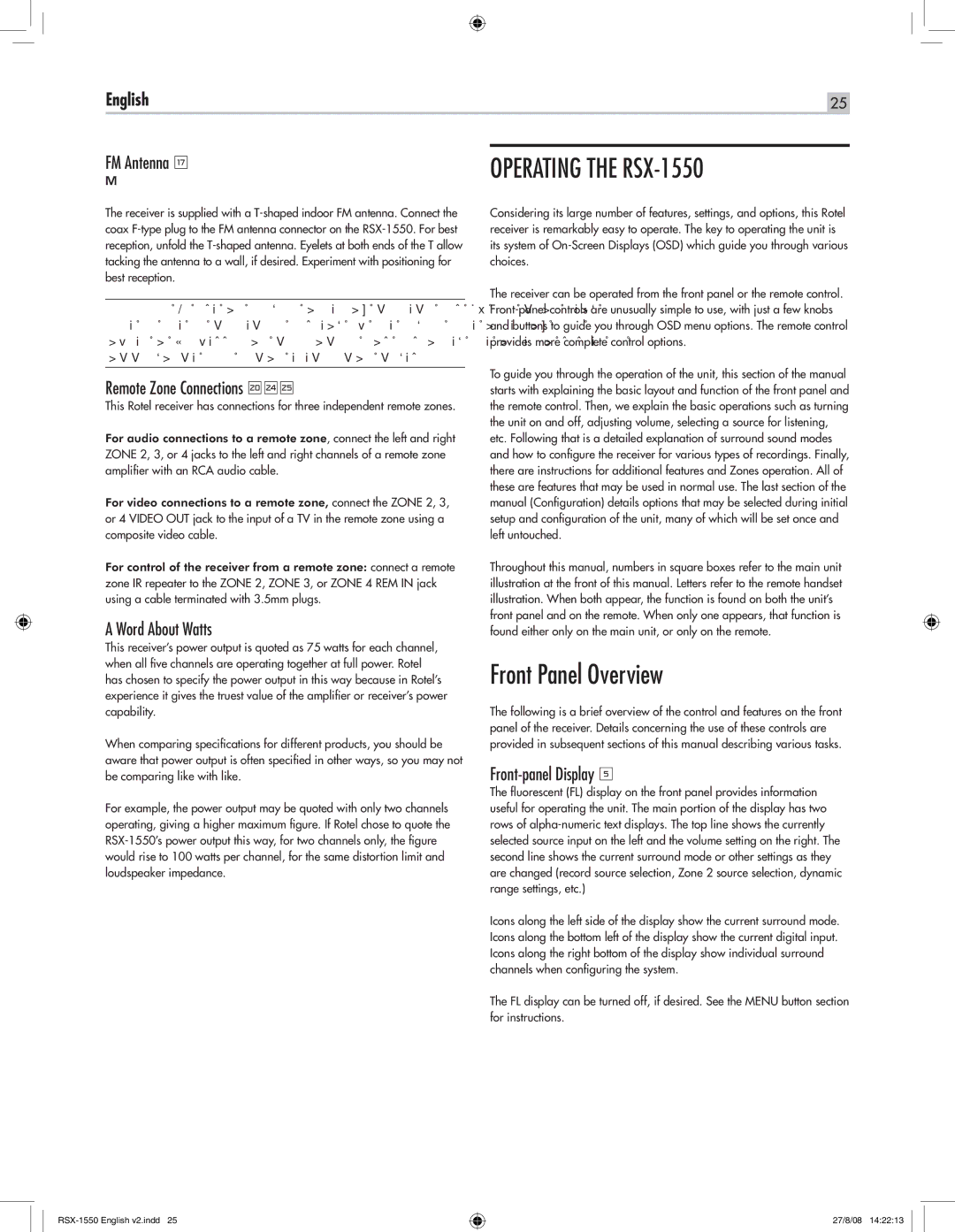
English | 25 |
FM Antenna t
See Figure 12
The receiver is supplied with a
Note: To use an outdoor antenna, connect its 75 ohm coax lead wire to the FM connector instead of the indoor wire antenna, only after a professional contractor has installed the antenna system in accordance with local electrical codes.
Remote Zone Connections i]\
This Rotel receiver has connections for three independent remote zones.
For audio connections to a remote zone, connect the left and right ZONE 2, 3, or 4 jacks to the left and right channels of a remote zone amplifier with an RCA audio cable.
For video connections to a remote zone, connect the ZONE 2, 3, or 4 VIDEO OUT jack to the input of a TV in the remote zone using a composite video cable.
For control of the receiver from a remote zone: connect a remote zone IR repeater to the ZONE 2, ZONE 3, or ZONE 4 REM IN jack using a cable terminated with 3.5mm plugs.
A Word About Watts
This receiver’s power output is quoted as 75 watts for each channel, when all five channels are operating together at full power. Rotel has chosen to specify the power output in this way because in Rotel’s experience it gives the truest value of the amplifier or receiver’s power capability.
When comparing specifications for different products, you should be aware that power output is often specified in other ways, so you may not be comparing like with like.
For example, the power output may be quoted with only two channels operating, giving a higher maximum figure. If Rotel chose to quote the
OPERATING THE RSX-1550
Considering its large number of features, settings, and options, this Rotel receiver is remarkably easy to operate. The key to operating the unit is its system of
The receiver can be operated from the front panel or the remote control.
To guide you through the operation of the unit, this section of the manual starts with explaining the basic layout and function of the front panel and the remote control. Then, we explain the basic operations such as turning the unit on and off, adjusting volume, selecting a source for listening, etc. Following that is a detailed explanation of surround sound modes and how to configure the receiver for various types of recordings. Finally, there are instructions for additional features and Zones operation. All of these are features that may be used in normal use. The last section of the manual (Configuration) details options that may be selected during initial setup and configuration of the unit, many of which will be set once and left untouched.
Throughout this manual, numbers in square boxes refer to the main unit illustration at the front of this manual. Letters refer to the remote handset illustration. When both appear, the function is found on both the unit’s front panel and on the remote. When only one appears, that function is found either only on the main unit, or only on the remote.
Front Panel Overview
The following is a brief overview of the control and features on the front panel of the receiver. Details concerning the use of these controls are provided in subsequent sections of this manual describing various tasks.
Front-panel Display 5
The fluorescent (FL) display on the front panel provides information useful for operating the unit. The main portion of the display has two rows of
Icons along the left side of the display show the current surround mode. Icons along the bottom left of the display show the current digital input. Icons along the right bottom of the display show individual surround channels when configuring the system.
The FL display can be turned off, if desired. See the MENU button section for instructions.
27/8/08 14:22:13
